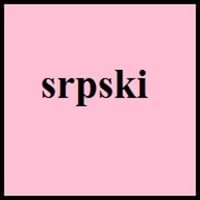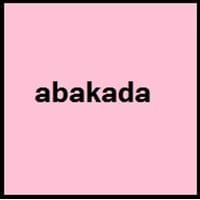Countries
Bosnia and Herzegovina, Kosovo, Serbia, Slovakia
Philippines
National Language
Bosnia, Croatia, Montenegro, Serbia
Philippines
Second Language
Not spoken in any of the countries
Filipinos
Speaking Continents
Europe
Asia, Australia
Minority Language
Croatia, Czech Republic, Hungary, Macedonia, Montenegro, Romania, Slovakia
Australia, Canada, Guam, Hong Kong, New Zealand, Singapore, United Kingdom
Regulated By
Board for Standardization of the Serbian Language
Komisyon sa Wikang Filipino, National Languages Committee
Interesting Facts
- Serbian language was derived from the Old Church Salvic, as the language was commonly spoken by most of Slavic people in the 9th Century.
- Serbian language is based on Stokavian dialect.
- In 1593, "Doctrina Christiana" was first book written in two versions of Tagalog.
- The name "Tagalog" means "native to" and "river". "Tagalog"is derived from taga ilog, which means "inhabitants of the river".
Similar To
Bosnian and Croatian Languages
Filipino, Cebuano and Spanish Languages
Derived From
Not Available
Not Available
Alphabets in
Serbian-Alphabets.jpg#200
Tagalog-Alphabets.jpg#200
Scripts
Cyrillic, Latin
Baybayin
Writing Direction
Left-To-Right, Horizontal
Left-To-Right, Horizontal
Hello
Здраво (Zdravo)
Kamusta
Thank You
Хвала лепо (Hvala lepo)
Salamat po
How Are You?
Како си? (Kako si?)
Kamusta ka na?
Good Night
Лаку ноћ (Laku noć)
Magandang gabi
Good Evening
Добро вече (Dobro veče)
Magandang gabi po
Good Afternoon
Добар дан (Dobar dan)
Magandang hapon po
Good Morning
Добро јутро (Dobro jutro)
Magandang umaga po
Please
Молим (Molim)
pakiusap
Sorry
Жао ми је (Žao mi je)
pinagsisisihan
Bye
Довиђења (Doviđenja)
Paálam
I Love You
Волим те (Volim te)
Iniibig kita
Excuse Me
Извините (Izvinite)
Ipagpaumanhin ninyo ako
Dialect 1
Prizren-Timok
Batangas Tagalog
Where They Speak
Southeastern Serbia
Batangas, Gabon
Dialect 2
Smederevo–Vršac
Bisalog
Where They Speak
Serbia
Philippines
Dialect 3
Torlakian
Filipino
Where They Speak
Bulgaria, France, Kosovo, Macedonia, Romania, Serbia
Philippines
Speaking Population
Not Available
Second Language Speakers
Not Available
Native Name
српски (srpski) српски језик (srpski jezik)
Tagalog
Alternative Names
Montenegrin
Filipino, Pilipino
French Name
serbe
tagalog
German Name
Serbisch
Tagalog
Pronunciation
[sr̩̂pskiː]
[tɐˈɡaːloɡ]
Ethnicity
Serbs
Tagalog people
Language Family
Indo-European Family
Austronesian Family
Subgroup
Not Available
Indonesian
Branch
Not Available
Not Available
Early Forms
No early forms
Proto-Philippine, Old Tagalog, Classical Tagalog, Tagalog
Standard Forms
Standard Serbian
Filipino
Signed Forms
Not Available
Not Available
Scope
Individual
Individual
ISO 639 6
Not Available
Not Available
Glottocode
serb1264
taga1269
Linguasphere
53-AAA-g
31-CKA
Language Type
Living
Living
Language Linguistic Typology
Subject-Verb-Object
Object-Verb-Subject, Subject-Verb-Object, Verb-Object-Subject, Verb-Subject-Object
Language Morphological Typology
Not Available
Not Available
All Serbian and Tagalog Dialects
Most languages have dialects where each dialect differ from other dialect with respect to grammar and vocabulary. Here you will get to know all Serbian and Tagalog dialects. Various dialects of Serbian and Tagalog language differ in their pronunciations and words. Dialects of Serbian are spoken in different Serbian Speaking Countries whereas Tagalog Dialects are spoken in different Tagalog speaking countries. Also the number of people speaking Serbian vs Tagalog Dialects varies from few thousands to many millions. Some of the Serbian dialects include: Prizren-Timok, Smederevo–Vršac. Tagalog dialects include: Batangas Tagalog , Bisalog. Also learn about dialects in South American Languages and North American Languages.
Serbian and Tagalog Speaking population
Serbian and Tagalog speaking population is one of the factors based on which Serbian and Tagalog languages can be compared. The total count of Serbian and Tagalog Speaking population in percentage is also given. The percentage of people speaking Serbian language is Not Available whereas the percentage of people speaking Tagalog language is 0.42 %. When we compare the speaking population of any two languages we get to know which of two languages is more popular. Find more details about how many people speak Serbian and Tagalog on Serbian vs Tagalog where you will get native speakers, speaking population in percentage and native names.
Serbian and Tagalog Language Codes
Serbian and Tagalog language codes are used in those applications where using language names are tedious. Serbian and Tagalog Language Codes include all the international language codes, glottocodes and linguasphere.





